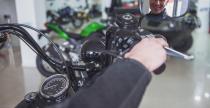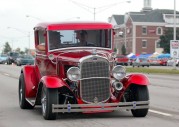Chinese Microphone - China Chinese Microphone Manufacturer
Chinese Microphone WebSite Link:
http://www.chinese-microphone.com/
China GuangZhou TianTuo Microphone Manufacturing Co., Ltd WebSite:
http://www.chinese-microphone.com/
Microphone Products are: Wireless Microphones, Conference Microphones,
Headset Microphones, and Lapel Microphones, interview microphones,
wired microphones, musical instrument microphones, drum microphones,
teaching microphones, recording microphones, computer's USB
microphones and microphone accessories and So on.
Microphones for your Home Studio Choosing and Using Microphones for
your Home Studio... Microphones convert the sounds youhear into
electrical signals that can be recorded onto tape orhard disk.
Choosing the right mic for the job at hand is criticallyimportant to
getting the sound you want on your final tracks. Noamount of EQ,
compression or reverb can change the subtlesignature that each
particular microphone leaves on your audiotracks. So, how do you
choose that perfectmic without first buying and auditioning everything
on the market?A good first step would be to familiarize yourself with
the basic microphonetypes: Microphone pickup patterns: Microphone
pickup types: Microphones used on: Omnidirectional Cardioid Figure-
eight Stereo Dynamic Condenser Ribbon Vocals Instruments MICROPHONE
PICKUP PATTERNS: Omnidirectional The term "Omnidirectional"
describes a type of microphone that picks up sound equally from all
directions. Omni mics tend to have very good bass response, without
the artificial low frequency boost provided by the 'proximity effect'
of a typical cardioid m http://www.chinese-microphone.com/ ic (see
below). Really good omnidirectional condenser mics are great at
capturing a sense of 'open space' and 'air', which makes them the
first choice for critical reproduction of acoustic instruments in good
sounding acoustic spaces, such as symphonic orchestras, vocal choirs,
pianos or string quartets in concert halls. You can also use
omnidirectional microphones to 'close-mic' an instrument or vocalist
without worrying about the artificial bass boost caused by a
directional mic's 'proximity effect'. Some of the highest fidelity
mics available are of the omnidirectional condenser type, such as mics
from Schoeps, DPA (B&K) and Earthworks. A common use for dynamic
omni mics is in TV and radio reporting (known as Electronic News
Gathering or "ENG"), where you want to capture environmental
sounds along with the reporter's voice. back to top Cardioid A
"Cardioid" microphone is more sensitive to sounds directly
in front of it than to sounds 90 degrees off to either side (when
plotted on a graph the response pattern looks heart-shaped, hence the
name). A mic with a cardioid pattern is even less sensitive to sounds
directly behind it — in fact, cardioid mics practically cancel
pickup of sounds emanating from directly behind the mic. This makes
cardioid mics very useful for sound reinforcement (P.A.) and live
recording use, as well as the most popular choice for use in the
imperfect recording environment of most home studios. To use a
cardioid mic, simply aim the mic at the instrument you want to record,
and the rest of the stage sound will be at least somewhat quieter than
the desired instrument's sound. There are a couple of variations on
the cardioid pick up pattern. Supercardioid and hypercardioid mics are
less sensitive to 90 degree off-axis sources than plain cardioids,
meaning that they will do a better job of rejecting sounds from off to
the sides. However, hypercardioids do pick up some sound from directly
behind the front of the mic, making them a little bit like a 'figure-
eight' mic (see below). Cardioid mics exhibit a characteristic called
the 'proximity effect'. The closer a sound source is to a cardioid mic
the more the mic will accentuate that sound source's bass frequency
output. This can add richness and fullness to a singer's voice or to a
saxophone's sound, but it can also muddy the sound of a guitar amp or
acoustic bass. When miking from a distance, cardioid mics have a
tendency to sound somewhat thin in the bass when compared to
omnidirectional mics. For this reason, cardioid mics are usually used
for close-miking (with the mic placed less than two feet from the
sound source), while omnidirectional or figure-eight mics are usually
used when miking from farther away. back to top Figure-Eight Figure-
eight mics have the open sound and good bass response of
omnidirectional mics, with the added advantage that they reject sounds
coming from either side of the mic. Since figure-eights pick up sound
equally well from directly in back and directly in front, care should
be taken that you don't capture undesirable reflections from low
ceilings or nearby walls. A good place to use a figure-eight pattern
mic is when you need to cancel reflections from side walls in a narrow-
ish room but you still want to capture a good sense of room ambience.
back to top MICROPHONE PICKUP TYPES Dynamic microphones Dynamic mics
use a 'moving coil' to sense the changes in air pressure that make
sound waves. The wire coil is connected to a thin diaphragm, and the
whole assembly is suspended over a permanent magnet. When moving air
hits the diaphragm it causes the coil to move over the magnet, which
causes a process called electromagnetic induction to take place. This
causes an AC voltage to be formed that is an electrical 'analogy' of
the original sound. The electrical signal that appears at the mic's
output is a more or less faithful reproduction of the original
vibrations in air, only in fluctuating AC voltages instead of air
pressure changes. - Small diaphragm dynamic microphones These are by
far the most commonly used mics for P.A. and stage sound use. Dynamic
microphones are typically very rugged and don't require a voltage
source to work properly. Cardioid pattern, small diaphragm dynamic
mics are most often used as handheld vocal mics (like the very common
Shure SM-58) or as instrument mics (li
ke the equally common Shure SM-57). There are many other similar
dynamic mics from companies like Audix, Electro-Voice, Sennheiser and
others. The Shure SM57 (left) and the SM58 (right): These are the most
commonly used small-diaphragm dynamic microphones. - Large diaphragm
dynamic microphones While similar to their small diaphragm cousins,
large diaphragm dynamic mics are typically used for very loud, bass-
heavy instruments such as tom-toms, kick drums, and bass amp speakers.
The larger diaphragm allows these mics to withstand higher Sound
Pressure Levels (SPL's) with ease, which allows low-distortion
reproduction of very loud instruments such as trumpets, trombones and
electric guitar amplifiers. However, the larger diaphragm will also
have a higher moving mass, which can limit the high frequency response
and transient response of the mic. Some popular large diaphragm
dynamic mics are: Electro-Voice RE-20 - A favorite of radio announcers
and a good mic for kick drums Shure SM-7 - Similar to the E-V RE-20
Sennheiser MD-421 - Commonly used on tom-toms and hand percussion, but
also works great on horns, kick drums and guitar amps. The Shure SM7:
A large-diaphragm dynamic microphone used for broadcasters and voice-
overs, as well as for miking kick drums, brass and bass instruments.
back to top Condenser microphones Condenser microphones capture sound
using a conductive diaphragm with a capacitative charged plate behind
it. The charge is supplied by a DC voltage source from a battery or
from the 48 volt 'phantom power' supply present in most mixers and mic
preamps. Air pressure changes meeting the conductive diaphragm cause
it to move, which causes an analogous AC voltage to be formed in the
charged plate. These tiny AC voltages are sent to a tiny preamp built
into the microphone, which brings the signal level up to where it can
drive a typical micrpphone preamp. The signal leaves the microphone
through the cable and on to the microphone preamplifier stage of the
mixer. Because the diaphragm of a condenser mic can be made very
http://www.chinese-microphone.com/ thin and light, condenser mics
tend to be more accurate and 'faster' than dynamic mics, especially in
the midrange and treble frequencies. However, condenser mics tend to
be more physically delicate than dynamic mics, so they are more
commonly used for studio recording than for live sound and P.A. Since
condenser mics need a tiny amplifier built into the mic casing (called
the "head amp"), the quality of its electronics will influence the
sound of the mic. Some condenser mics use a small vacuum-tube circuit
for their head amp, along with an external power supply box for the
electronics. This is what is referred to as a "tube mic." - Small
diaphragm condenser microphones Small diaphragm condenser mics have
the best high frequency response and quickest transient response of
all the commonly available microphone types. For this reason, these
mics are most often used as drum set overhead mics (to faithfully
capture cymbals and stick attacks), for acoustic stringed instruments
like guitars and violins, and for percussion instruments like
vibraphones, shakers, and marimbas. Another common use for small
diaphragm condenser mics is as stereo pairs for ambient pickup of
acoustic events in good sounding spaces. The one downside to small
diaphragm condensers is that they tend to have more self-noise than
other types of microphones. Some popular small diaphragm condenser
mics are: AKG C 451 - The "classic" small-diaphragm condenser mic. An
old favorite on piano, acoustic guitar and as drum kit overheads.
Neumann KM184 - A truly professional recording mic, used in the best
studios. Earthworks QTC-1 - A newer professional mic with extremely
accurate frequency and transient response. Shure SM-81 - Very flat
frequency response; commonly used on acoustic guitars and as drum kit
overheads. Audio Technica AT-3528 - A cardioid model that is sort of a
'poor man's KM-84'. AKG C 1000 S - A good all-around budget favorite.
Oktava MC-012 - From Russia, this is another mic made to be similar to
the KM-84 but for a lot less money. The Neumann KM-180 series small
diaphragm condenser microphones are highly regarded by recording
professionals. - Large diaphragm condenser microphones Since condenser
mics are intrinsically more sensitive to higher frequencies, it's
possible to combine the warmth and fullness of a large diaphragm with
the high frequency detail typical of small diaphragm condenser mics
into a single microphone. These large diaphragm condenser mics are the
mainstay of recording studios everywhere, especially for recording
vocals, pianos, horns and other acoustic instruments. Some older
vacuum tube based large diaphragm condenser mics, such as the Neumann
U47, U67 and AKG C12, are collector's items prized for their sonic
warmth and smoothly accurate reproduction of aural details. The
Neumann U87 (introduced in the mid-1960s) is an FET-amplified, large
diaphragm mic that has become a modern classic. Some popular large
diaphragm condenser mics are: AKG C 414 B-ULS - An industry standard
for overhead drum miking and general use; provides choice of cardioid,
hypercardioid, omni, and figure-8 pickup patterns. Neumann U87 - The
industry standard; provides choice of cardioid, hypercardioid, omni,
and figure-8 pickup patterns. Neumann TLM 103 - A new, lower-priced
version of the famous U87; cardioid only. AKG C 3000 B - A budget mic
based on the design of the venerable C 414 B-ULS; cardioid only. Audio
Technica AT-4033a - An early '90s design that proved to be a huge hit.
Now that its price has been lowered, the AT-4033 is once again a great
value. Cardioid pattern only; great on saxophones. The Neumann U87 is
the 'gold standard' of large diaphragm condenser microphones, used in
major recording studios around the world. A quick note about Chinese-
manufactured large-diaphragm condenser mics: A company in the People's
Republic of China, 797 Audio, has been making copies of popular
Western-made microphones for many years now. These are such obvious
copies that international copyright law prohibits selling them in
Europe and North America. However, several Western companies have been
working with 797 Audio to have their own designs made in China and
then sold in the West. Most of these mics look almost exactly like the
Neumann U87 and are claimed to sound 'just like the real thing, but
for a fraction of the cost' ?the Nady SCM 900, Joe Meek JM47
Meekrophone and Marshall Electronics MXL 2001-P are good examples. Of
course, there ain't no such thing as a free lunch. I own an MXL 2001-
P, and while I think it is a good mic for $150, I'd say it sounds more
like a caricature of a U87 than the real thing. The MXL 2001-P's
proximity effect is not well controlled, so male voices come out with
a 'woofiness' in the low end if you work the mic too close. The high
frequencies are more 'sizzly' than 'silky,' but I wouldn't say that
the MXL mic sounds bad. It just sounds like a good cheap mic with a
'scooped out' midrange response, sort of how a mic sold at your local
Radio Shack might sound if it was designed to 'sound like a Neumann.'
In the end, I would say that $150 is just a little too much for the
MXL 2001-P, but for $100 it would be worth it for many people. (Note
that the Nady SCM 900 looks identical, and both the Nady and Marshall
mics have been dropping in price.) I would say that an MXL 2001-P
certainly beats a Shure SM58 or SM57 for recording vocals, piano or
acoustic guitar, but if you already own a CAD, RŘDE, AKG or other
inexpensive condenser mic, don't think that you're missing out on
anything. Bear in mind that not all mics made by 797 Audio sound
'cheap.' The slightly more expensive Marshall Electronics MXL 2003
sounds noticeably smoother than the MXL 2001-P, and reviewers are
positively gushing over the Studio Projects C1, C3 and B1 microphones
(designed in the USA, made in China). There are some good-sounding
Russian-made condenser microphones available for almost as low prices
as the mics made by 797 Audio. The Oktava MC-219 is an old 'sleeper'
favorite. The above are my own opinions, so feel free to apply your
own personal grain of salt. Some reviewers have written that the MXL
2001-
P is an unbeatable bargain, while others (especially at ProRec.com)
have lambasted almost every Chinese-made mic as shameless (and lousy-
sounding) scams. As you can see, I've taken the middle ground. back to
top Ribbon microphones When a wafer-thin, small aluminum ribbon is
suspended between two mounting points inside a strong magnetic field,
you get a microphone that is extraordinarily sensitive to vibrations
in air (sound). Ribbon mics can really capture the thump of a plucked
acoustic bass or the subtle dynamics of jazz drums. Unfortunately,
ribbon mics tend to be extraordinarily fragile—blow on the ribbon
the wrong way and you can stretch it out beyond repair. Nevertheless,
ribbon mics remain a favorite of recordists everywhere. Some common
ribbon microphones: RCA BX-44 and BX-77 - The original classics. Coles
4038 - The standard in modern ribbon mics. Beyerdynamic M-260 - A
budget ribbon mic; hypercardioid only. Royer Labs R-121 - A new ribbon
mic design that is getting a lot of attention. The Coles 4038 (left)
is the standard ribbon microphone used by the BBC for recording and
broadcast. The Oktava ML-52 (right) is a new ribbon mic from Russia.
back to top Stereo microphones By combining two cardioid condenser
elements into one chassis, a single point stereo microphone can be
made. The most common is the X-Y type, where the two cardioid elements
are pointed away from each other at a 90 degree angle. Some stereo
mics are of the Mid-Side (MS) type, using a combination of a forward-
facing cardioid element with sideways-oriented figure-eight element,
which allows for remotely controlled adjustment of the stereo image
width. Some common stereo mics: Audio Technica AT-825 Shure VP-88
Crown SASS The Shure VP88 is a single-point stereo microphone commonly
used for on-location recording. back to top 'VOCAL' vs. 'INSTRUMENT'
MICROPHONES Vocal Microphones Recording the human singing or speaking
voice presents some unique challenges. Most people prefer a heightened
sense of 'presence' on voices, and will often also prefer a mild bass
boost for added 'warmth'. As a result, most microphones meant for
recording or amplifying vocals have a 'tailored' response
characteristic. Handheld, dynamic vocal microphones are designed to be
very sturdy and produce as little handling noise as possible. They are
also designed with a very 'tight' cardioid or hyper-cardioid pick-up
pattern, so that there is less 'blee http://www.chinese-microphone.com/
d' from other instruments on the stage. The standard mic of this type
is the Shure SM58. It can withstand very rough treatment and has very
good feedback rejection, making it perfect for daily use on stages
where amplified rock/pop/r&b/jazz bands play. The SM58 has a
specially-tailored response that reduces bass pickup from far away
(minimizing 'booming' from the stage sound) but will boost the bass
when the singer comes in close (creating a big, warm sound). The SM58
also has a substantial peak in its response from about 2kHz up to
about 12kHz, which adds a pleasant 'sheen' and overall brightness to
the sound. This helps vocals cut through a dense mix with clarity and
intelligibility. You can usually tell if a microphone is designed for
live sound vocal use if it is equipped with a pop filter to protect
the pickup from blasts of air and plosive sounds ("p",
"b" and "k" sounds). The Shure SM58 pictured at
left has a spherical, metal screen pop filter lined with foam rubber
on the inside. Condenser Microphones for Recording Vocals – Large-
diaphragm condenser microphones like the Neumann U87 or AKG C12 are
typically used for recording vocals in recording studios. Like
handheld stage mics, these microphones also have a presence peak and
proximity effect tailored to enhance the sound of the vocalist.
However, because these large-diaphragm condenser microphones are to be
used in the more controlled environment of a recording studio, they
can have 'wider' cardioid pick-up patterns, allowing for a more 'open'
sound. A recording engineer will pick his microphones like a musician
picks his instrument — a 'darker' mic will help tame a high,
shrill voice while a clearer, brighter sounding mic will help the
vocal cut through a dense mix. There is no single 'best' microphone
for all situations — only a palette of good microphones from
which the recording engineer has to choose the right tool for the job
at hand. The standard large-diaphragm vocal mic is the Neumann U87,
while some prefer the vacuum-tube based Neumann U47. These microphones
have a distinctive upper-midrange to treble boost (presence boost) and
a warm, rich bass-boost from proximity effect. Similar mics to the U47
and U87 are the AKG C12 and C 414 B-ULS, which have the crisper sound
characteristic of AKG microphones in general (which some engineers
love and others hate). There are many less-expensive versions of these
microphones on the market today. Here is a partial list: RŘDE NT1000
Audio Technica AT-4033a, AT-4047 AKG C2000S, C3000B Marshall
Electronics MXL-2001-P Studio Projects B1 and C1 Oktava MC-219 and
MC-319 When a condenser microphone is used to record a vocalist, the
engineer will often hang a pop screen in between the vocalist and the
microphone to keep loud 'p', 'b' and 'k' sounds from overloading the
mic's pickup and spoiling a take. back to top Instrument Microphones
There are many different kinds of instruments, so different kinds of
mics are used. When recording acoustic instruments for classical
music, the signal from the microphone should be as faithful as
possible to the original sound. However, instruments used in rock and
pop music can be very loud and require a microphone that can withstand
extremely high sound pressure levels without distorting. It is
extremely difficult to make a microphone that is both sensitive enough
to pick up the subtle nuances of a fine acoustic instrument while also
being able to capture the brute force of a rock kick drum or a
Marshall stack without overloading. Since there is no single 'best'
microphone for all situations, it becomes necessary to choose the best
tool for the job at hand. Dynamic Microphones for loud sounds such as
rock drumset, guitar amplifiers and close-miking of brass instruments
– There are a select few dynamic microphones that are both rugged
and have a smooth sound suitable for recording high-decibel musical
instruments. These microphones are typically more expensive than
dynamic vocal mics (over $350) and do not work as well as condenser
mics on instruments with complex high-frequency information. The
Sennheisser 421 and 422 and Beyerdynamic M88 are among the most widely
used dynamic instrument mics. The Electro-Voice RE-20 is also popular.
The Shure SM57 is frequently used on snare drums, hand percussion
(congas, bongos, timbales, etc.) and guitar amplifiers, but not
usually for bass-heavy instruments like kick drum or electric bass.
You will usually see dynamic microphones used for live stage
performances, while condenser mics are more often used in the
recording studio. Condenser Microphones for Recording Instruments -
When a higher level of fidelity is required, especially in the
recording studio, condenser microphones will often be used. Again, the
type of microphone must be chosen to match the sonic chara
cteristics of the source to be recorded. Orchestral instruments and
Ensembles – Acoustic stringed instruments and classical music
ensembles will usually be recorded with sensitive condenser
microphones with relatively flat frequency response. It's generally
acknowledged that small-diaphragm condenser mics such as those from
DPA, Schoeps and Earthworks provide the most accurate response, while
some prefer the pleasant-sounding coloration of the large diaphragm
Neumann M50 or similar. Close-Miking of Individual Acoustic
Instruments – When recording an individual brass, wind or reed
instrument for a pop or jazz recording, a large diaphragm condenser
microphone such as a Neumann U87 or AKG C 414 B-ULS will often be
used. If recording a featured 'solo', the instrumentalist is treated
similarly to a vocalist—the microphone may be chosen as much for
its desirable colorations as for its clarity, warmth, headroom, lack
of distortion, etc. Miking Piano - Acoustic piano is treated in
several different ways, depending on the style of music and the s
http://www.chinese-microphone.com/ ound quality desired. For solo
piano or classical music, the piano is usually miked from a
considerable distance, with careful attention paid to the quality of
room acoustics and the degree to which the microphones pick up the
ambient sound of the room compared to the more direct sound of the
piano. Often an X-Y stereo pair of condenser mics will be used. For
rock, pop or jazz piano in a group, the piano will usually be miked
much closer, often with the lid closed and the piano isolated from the
room sound with sound-absorbing blankets. For a robust, rich sound
choose large diaphragm condenser mics; for a brighter, clear sound
choose small diaphragm condenser mics. Miking the Drum-Set - For rock
and pop, the various pieces of the drumset are miked individually.
This allows greater freedom in the mixdown phase to alter the sound to
taste. Snare Drum - The most common technique is to place a Shure SM57
so that it picks up the sound from the batter (top) head. Sometimes a
second microphone is placed underneath the drum to pick up the sound
of the snare wires. The output from this microphone may need to be
reversed in polarity so as not to introduce phase cancellations with
the signal from the top snare mic. Kick Drum - Depending on the sound
of the kick drum itself, a large diaphragm dynamic mic such as an E-V
RE20 may be placed close to the center of the front head, or inside
the drum (if the front head has a hole in it or has been removed).
Experimentation with placement will be necessary to achieve the
desired sound. Cymbals - In most cases a stereo pair of condenser
microphones will be placed at least two feet above the kit to capture
the sound of the cymbals (and the overall sound of the drumset). Where
it is desired to capture the sound of the tom-toms with the overhead
mic pair, it is usually best to use large diaphragm condenser
microphones for the task (the AKG C 414 B-ULS works well here). If the
tom-toms will be close-miked, it is usually best to use small
diaphragm condenser mics so that the low mids don't build up to an
unusable degree. Suitable small diaphragm condenser mics include the
AKG C1000S, Audio Technica AT-4041, Neumann KM-184 and Oktava MC012.
Tom-Toms - If desired, the individual tom-toms can be close-miked with
large diaphragm dynamic microphones such as the Sennheisser 421.
Small, clip-on condenser mics are also used (such as the Shure Beta
98). Take care to place the microphones so that they will not cause
phase cancellations or introduce excessive 'bleed' between tracks. The
Old-Fashioned Way - In the 1950s and '60s, drumsets were often miked
with only two microphones, one a couple of feet or so in front of the
kit, the other a couple of feet overhead and pointed at the snare
drum. Ribbon mics like the RCA BX-77 or Coles 4038 were often used, as
well as the newer large diaphragm condenser mics like the Neumann U67.
While you will not get a stereo spread with this setup, you can get a
very accurate picture of the acoustic sound of the drumset. This can
be a very effective technique for making live recordings of jazz
groups. IF YOU MUST CHOOSE ONLY ONE MICROPHONE... If you are recording
your parts one at a time, overdubbing track by track in order to build
up your production, you may be able to get away with only one
microphone. As you can tell from the information you've just read,
there really isn't one microphone that will be best for all the
instruments you may need to record, in addition to your vocals. In
order to make the decision easier, you will need to prioritize.
Usually the vocal is the single most important element in the mix.
Therefore, it's probably best to get a microphone that complements the
vocals. Usually this will be a large-diaphragm condenser microphone
(see Condenser Microphones, above). If you can afford a multi-pattern
mic like the AKG C 414 B-ULS or the Neumann U87ai, you will have more
flexibility in choosing the sound that best fits the source. However,
a fairly neutral sounding cardioid-only condenser mic can work well on
a wide variety of sound sources. Be sure to experiment with mic
placement to get the best results. THE '4-TO-1' RULE When placing
cardioid-patterned microphones on a stage or in the studio, remember
the 4-to-1 rule—each microphone should be at least four times as
far from the next one as it is from the sound source. For example,
let's say you have a saxophone player and a vocalist standing next to
eachother on a stage. Let's now assume that the vocalist will be
singing up to six inches away from her microphone, and the saxophonist
will be playing up to a foot away from his mic. Since the maximum
distance between the sound source (the vocalist and the saxophonist)
and their respective microphones will be one foot, the 4-to-1 rule
dictates that the two microphones (and the two musicians) should be
placed no less than four feet from eachother. Placing the microphones
any closer together will likely result in excessive off-axis bleed
from one mic to the other, resulting in nasty sounding comb-filter
effects when you mix the sounds together. When using microphones with
wider patterns, you will need to keep them further apart. back to
topBack to the Table ofContentsThis page looks best when viewed
withNetscape 3.0 or higher, or Microsoft Internet Explorer 2.0
orhigher
Wholesale Chinese Microphone
 Tapety Ferrari
Tapety Ferrari  American Truck Simulator: Colorado oficjalnie zapowiedziane
American Truck Simulator: Colorado oficjalnie zapowiedziane Niezwykły triumf Kajetanowicza i Szczepaniaka, Polacy wygrywają Rajd Portugalii!
Niezwykły triumf Kajetanowicza i Szczepaniaka, Polacy wygrywają Rajd Portugalii! Na Co Zwracać Uwagę, Kupując Pierwszy Motocykl?
Na Co Zwracać Uwagę, Kupując Pierwszy Motocykl? Alpina B5 i D5 S: nowe BMW serii 5 z większą porcją mocy i stylu
Alpina B5 i D5 S: nowe BMW serii 5 z większą porcją mocy i stylu Silverstone Circuit - symbol Formuły 1
Silverstone Circuit - symbol Formuły 1 Gaz-M20 Pobieda: zapomniany pierwowzór FSO Warszawy
Gaz-M20 Pobieda: zapomniany pierwowzór FSO Warszawy Oldtimery podczas Woodward Dream Cruise 2010
Oldtimery podczas Woodward Dream Cruise 2010  Rajd Finlandii 2008 (1)
Rajd Finlandii 2008 (1)